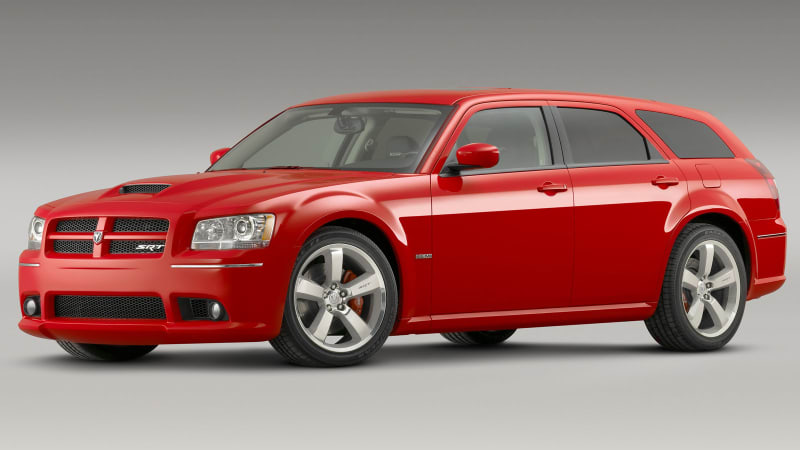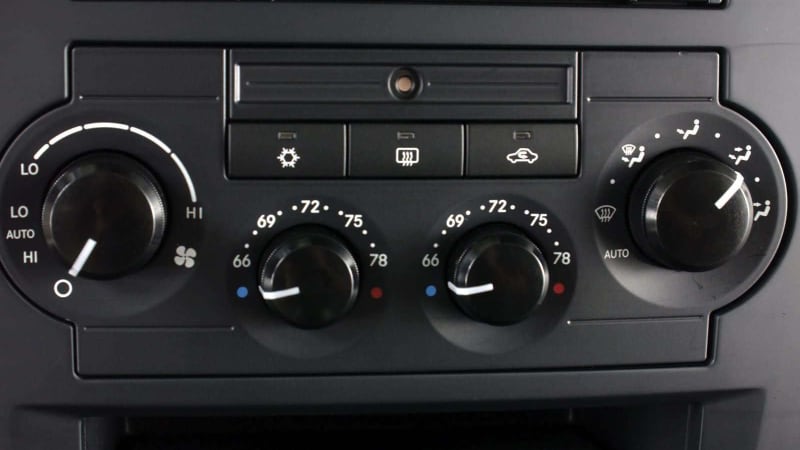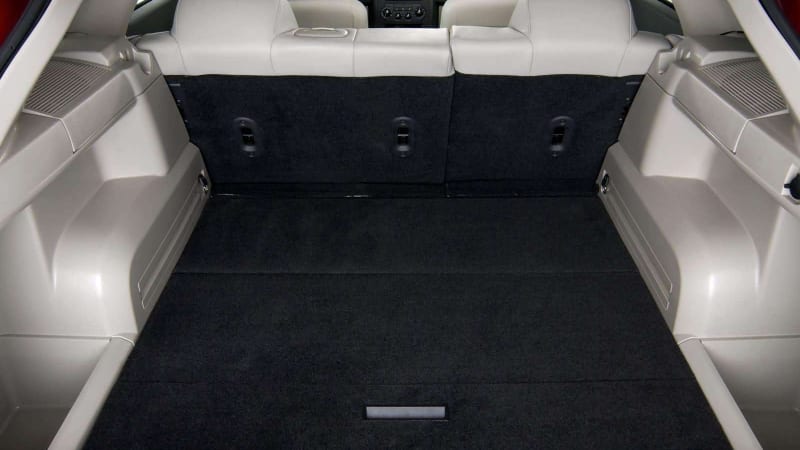Future Classic | 2005-2008 Dodge Magnum
Ah, yes, the Dodge Magnum, arguably the forgotten LX and conceived back when Detroit bean counters still held out hope for the classic American station wagon. It didn’t hurt that then-DaimlerChrysler had decided to build its next round of large family sedans on a platform that was strategically seasoned with elements of the Mercedes-Benz W220 and W211 platforms, the former of which was already nearly a decade old. If anybody knows how to do a modern wagon, it’s the Germans, right?
But there was nothing characteristically German about what showed up in Dodge showrooms in 2005. The Magnum was big, brash and unapologetically present. The exhaust note might as well have been a recording of some folks chanting “U-S-A!” at a backyard bar-b-q. Who knew the Dodge Charger, Dodge Challenger and Chrysler 300 would live long enough that we’d forget about their long-lost sibling? Early examples of the Charger and 300 have now reached smoking age (no more hiding burnouts under the bleachers). The Magnum too, technically, but it was discontinued after its 4th model year, way back in 2008. The others, meanwhile, soldier on.
The automotive landscape has changed quite a bit over the past two decades. Chrysler’s ongoing LX models have evolved too, though not nearly as much as many of their contemporaries. Despite their much-improved powertrains and top-notch infotainment systems, the Charger, Challenger and 300 are still very similar to the cars that debuted in 2004. By virtue of its early demise, the Magnum saw only modest upgrades over the course of its run and never benefited from the comprehensive powertrain overhaul that elevated its surviving siblings.
Why is the Dodge Magnum a future classic?
The Magnum was not a performance car, first and foremost. Nor was it the only domestic station wagon to make a splash with enthusiasts over the past two decades; Cadillac’s likewise-short-lived CTS wagon takes that nod and earns a pile of extra credit for being offered with a high-performance V variant with an available manual. But the Magnum’s combination of looks and everyday-branded availability made it accessible to enthusiasts of virtually any budget. Sadly, due at least partially to Chrysler’s cringeworthy build quality at the time, many of them are now adorning junkyards. Cleaner ones far more difficult to find and it’s only a matter of time before they’ll be truly scarce.
Put simply, though, wagons are cool. This is a wagon that happened to come with not one, but two potent American V8s. The Magnum was an early pioneer of Dodge’s LX-led performance revival and was one of the first cars to wear the SRT-8 badge.
What is the ideal example of the Dodge Magnum?
We won’t mince words: the Magnum, broadly, was not Chrysler at its best. Models produced for the 2005-2007 model years especially came with dreary cabins and a borderline-asthmatic base engine. The 2.7-liter V6 made 190 horsepower and 190 pound-feet of torque when it debuted in 2005, which was pretty middling even then. The 3.5-liter upgrade made a far more respectable 250 horsepower and 250 pound-feet, but the real fun started one step higher. The R/T debuted with 340 horsepower and 390 pound-feet of torque thanks to its then-fresh but now-ubiquitous 5.7-liter Hemi V8. The SRT-8, which arrived in 2006, cranked that up to 425 horsepower and 420 pound-feet with a 6.1-liter V8. The Magnum’s Mercedes-Benz commonalities facilitated some convenient parts-sharing arrangements, notably including the 5-speed automatic that sat behind each of the Magnum’s four available engines. No manual gearbox was offered as an option.
While there’s often nuance involved in picking the best version of a car, this one’s pretty straightforward: the SRT-8 is where it’s at. It was the only model offered with the 6.1-liter V8, and while its performance is paltry by the standards of modern SRT models, it was the biggest, baddest Hemi rocket on the road in 2006. Unless you’re only in it for the aesthetic and find a super clean V6, you’re better off springing for SRT-8, or even the R/T.
Our used vehicle listings can be helpful to find a good deal near you. Narrow the offerings down by a radius around your ZIP code, and pay attention to the deal rating on each listing to see how a vehicle compares with others in a similar area.
Are there any good alternatives to the Magnum?
The most notable alternative to the Magnum would be the Cadillac CTS wagon. Like the Magnum, it was offered both as a plain family hauler and in a high-performance variant (the V). Cadillac asked a bit more money for the far-more-luxurious CTS and those in search of a manual are forced into a V model – a combination produced in exceedingly limited numbers. But you’ll get what you pay for with the V. It’s correspondingly more impressive both in terms of cabin appointments and performance (particularly the cornering kind).
Those who are less beholden to country of manufacture could also look to several contemporary alternatives from overseas. The Mercedes-Benz E-Class wagon (with which the Magnum shares some ancestry) checks many of the same boxes, offers a significantly better cabin (an admittedly low bar), and the E55 and E63 AMG variants will scratch that V8 performance itch even more aggressively than the big Dodge. But you’ll pay a pretty penny for those upgrades, both up front and in long-term maintenance. If all you want is a reasonably peppy family wagon, we’d point to the Saab 9-5 and Audi A6 Avant of the day.
If the wagon part isn’t important, well, we’re not really sure what you’re doing here, but it’s certainly possible to get a far better Hemi-powered Dodge these days than it was in 2008. The modern SRT-powered LX models boast far more exciting engine lineups (Hellcat, anybody?), vastly improved interiors and build sheets that don’t read like a fast food receipt. Any one of them will do nicely.
Related Video











